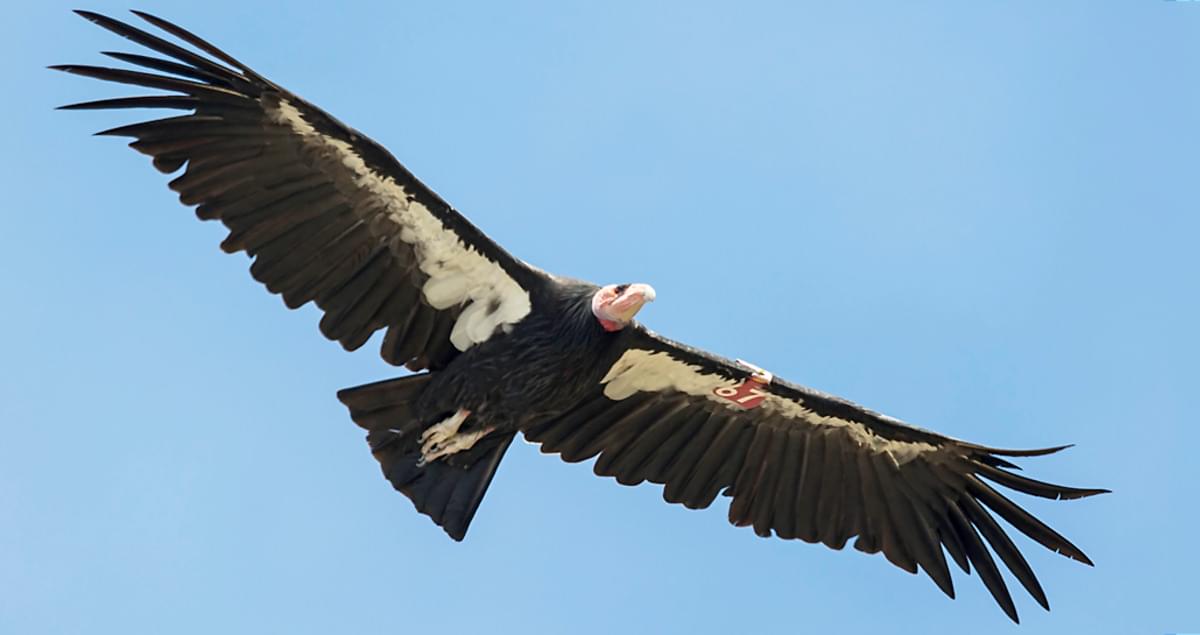The California condor (Gymnogyps californianus) is a New World vulture and the largest North American land bird. It became extinct in the wild in 1987 when all remaining wild individuals were captured, but has since been reintroduced to northern Arizona and southern Utah (including the Grand Canyon area and Zion National Park), the coastal mountains of California, and northern Baja California in Mexico. It is the only surviving member of the genus Gymnogyps, although four extinct members of the genus are also known. The species is listed by the International Union for the Conservation of Nature as Critically Endangered, and similarly considered Critically Imperiled by NatureServe. California Condors are the largest wild birds in North America. The wings are exceptionally long and broad, with impressive wingspans of 9.5 feet and weights of around 20 pounds, and with long primary feathers giving a fingered look to the wingtips. In flight the body is noticeably bulky, the head appears small, and the tail is short and broad. The exact lifespan of a California condor is unknown, but they are estimated to live over 60 years. Condors roost on large trees or snags, or on rocky outcrops and cliffs. Nests are located in caves and ledges of steep rocky terrain or in cavities and broken tops of old growth conifers created by fire or wind. Foraging habitat includes open grasslands, oak savanna foothills, and beaches adjacent to coastal mountains. Condors do not kill for food; they are carrion eaters and feed on the carcasses of mammals including deer, marine mammals such as whales and seals, and cattle. A condor may eat up to 3 to 4 pounds of carrion at a time and may not need to feed again for several days. Although adult condors have no predators (other than humans), eggs and chicks may be attacked in the nest by ravens or golden eagles. Condors are usually silent, but can issue a variety of hisses and snorts particularly when defending nest sites. Newborn chicks hiss, wheeze, and grunt at adults. Wing movements by these giant birds can generate sounds heard over a half-mile away. Here is a link so you can listen to this bird too.

I hope I can see one